Manual therapy is a hands-on approach offering relief from spinal stenosis by improving joint mobility and reducing muscle tension, enhancing comfort and function in Overland Park, KS.
What is Manual Therapy?
Manual therapy is a hands-on treatment approach focusing on joint mobilization, soft tissue techniques, and myofascial release to restore proper movement and reduce discomfort. It targets musculoskeletal pain and dysfunction, often used to address spinal stenosis by relieving pressure on nerves and improving mobility. Skilled therapists in Overland Park, KS, use these methods to enhance flexibility, strength, and overall spinal health, offering a non-invasive alternative to surgery or medication. Manual therapy is tailored to individual needs, promoting natural healing and functional improvement.
The Role of Manual Therapy in Treating Spinal Stenosis
Manual therapy plays a crucial role in managing spinal stenosis by addressing joint stiffness, nerve compression, and muscle tension. Techniques like joint mobilization and soft tissue work help improve spinal mobility, reduce pain, and restore function. In Overland Park, KS, skilled therapists use manual therapy to create space within the spinal canal, alleviating pressure on nerves and enhancing daily activities. This non-invasive approach complements other treatments, offering a personalized solution to improve quality of life and prevent further degeneration, making it a key component in spinal stenosis care.
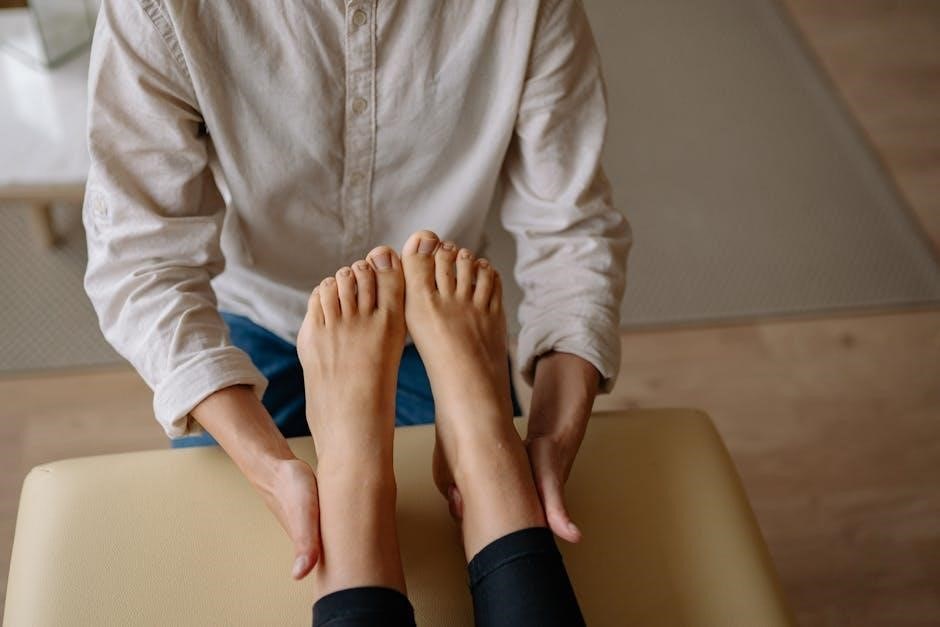
Understanding Spinal Stenosis
Spinal stenosis involves narrowing of the spinal canal, often due to aging or disc issues, causing nerve compression and discomfort. Manual therapy in Overland Park, KS, helps alleviate symptoms.
Definition and Causes of Spinal Stenosis
Spinal stenosis is defined as the narrowing of the spinal canal, compressing the spinal cord or nerves. Common causes include aging, herniated discs, and degenerative changes like osteoarthritis. In Overland Park, KS, manual therapy is a non-invasive approach to address symptoms like pain, numbness, and limited mobility. This condition often affects the lumbar and cervical regions, with treatment focusing on improving function and reducing discomfort through specialized techniques.
Symptoms of Spinal Stenosis
Spinal stenosis symptoms include pain, numbness, tingling, or weakness, often in the lower back or neck. Pain may radiate to the legs or arms and worsen with activity. Some patients experience relief when sitting or leaning forward. Severe cases can lead to difficulty walking or balancing. In Overland Park, KS, manual therapy helps alleviate these symptoms by addressing the underlying compression of nerves and improving spinal mobility. Early recognition of these symptoms is crucial for effective treatment and preventing further progression.
Types of Spinal Stenosis
Spinal stenosis primarily affects the cervical (neck) or lumbar (lower back) regions. Lumbar stenosis often causes radiating leg pain, while cervical stenosis may lead to neck pain or arm symptoms. Degenerative stenosis, common in aging, results from wear and tear. Congenital stenosis is rare, present from birth, while traumatic stenosis follows spinal injuries. Each type requires tailored manual therapy approaches in Overland Park, KS, to address specific symptoms and improve mobility, ensuring personalized care for optimal relief and functional improvement.

Benefits of Manual Therapy for Spinal Stenosis
Manual therapy alleviates pain, enhances mobility, and reduces muscle tension, providing non-invasive relief and promoting long-term spinal health for individuals with spinal stenosis in Overland Park, KS.
Relieving Pain and Discomfort
Manual therapy effectively reduces pain and discomfort in spinal stenosis by targeting joint restrictions and soft tissue tightness. Techniques like joint mobilization and myofascial release help alleviate pressure on nerves, decreasing inflammation and muscle spasms. This hands-on approach restores proper spinal mechanics, allowing for natural pain relief without invasive procedures. In Overland Park, KS, skilled therapists use these methods to address discomfort, improving mobility and reducing the need for pain medications. By addressing the root causes of pain, manual therapy enhances comfort and supports daily activities, promoting a better quality of life for individuals with spinal stenosis.
Improving Mobility and Flexibility
Manual therapy enhances mobility and flexibility by addressing joint stiffness and muscle imbalances common in spinal stenosis. Techniques like joint mobilization and soft tissue work improve spinal movement, reducing rigidity and promoting better range of motion. Skilled therapists in Overland Park, KS, tailor treatments to restore functional movement, enabling patients to perform daily activities with greater ease. Regular sessions can reduce stiffness, improve posture, and enhance overall flexibility, helping individuals with spinal stenosis maintain an active lifestyle and enjoy improved physical function.
Enhancing Overall Spinal Health
Manual therapy not only alleviates symptoms but also strengthens spinal stability and promotes long-term health. Techniques like myofascial release and muscle energy work reduce tension, improve spinal alignment, and enhance joint function. In Overland Park, KS, skilled therapists design personalized plans to address spinal stenosis, fostering a healthier spine through improved posture, reduced inflammation, and better movement patterns. Regular treatment can prevent further degeneration, empowering patients to maintain a robust spinal structure and enjoy lasting well-being.

Manual Therapy Techniques for Spinal Stenosis
Skilled therapists in Overland Park, KS, use joint mobilization, soft tissue work, and myofascial release to address spinal stenosis, enhancing mobility and reducing discomfort effectively.
Joint Mobilization and Manipulation
Joint mobilization and manipulation are key techniques used by manual therapists in Overland Park, KS, to address spinal stenosis. These methods involve gentle, targeted movements to improve joint mechanics and reduce stiffness. By enhancing spinal mobility, therapists can alleviate pressure on compressed nerves, offering relief from pain and discomfort. Manipulation techniques may include low-force adjustments or dynamic movements to restore proper joint function. These approaches are tailored to the patient’s condition and are often combined with other therapies for comprehensive care, helping to improve flexibility and reduce symptoms associated with spinal stenosis effectively.
Soft Tissue Mobilization
Soft tissue mobilization is a manual therapy technique focusing on muscles, tendons, and ligaments to relieve tension and improve circulation around the spine. In Overland Park, KS, therapists use gentle yet firm strokes to target tight tissues, reducing inflammation and pain caused by spinal stenosis. This approach helps restore flexibility, decreases muscle spasms, and enhances joint mobility. By addressing the surrounding soft tissues, therapists can alleviate nerve compression and promote a more balanced spinal environment, complementing joint mobilization and other therapies for comprehensive relief and improved function.
Myofascial Release
Myofascial release is a gentle manual therapy technique that targets the fascia, a connective tissue surrounding muscles, to eliminate restrictions and restore proper movement. In Overland Park, KS, therapists apply sustained pressure to release fascial tension, improving blood flow and reducing pain. This method is especially beneficial for spinal stenosis patients, as it helps reduce pressure on the spinal nerves and enhances flexibility. By addressing fascial restrictions, myofascial release can alleviate chronic pain, improve posture, and restore range of motion, offering long-term relief and supporting overall spinal health.
Muscle Energy Techniques
Muscle energy techniques (METs) are a form of manual therapy that engage the patient’s active participation to restore joint mobility and muscle balance. In Overland Park, KS, therapists use METs to address spinal stenosis by guiding patients through controlled contractions of specific muscles. This approach helps improve joint alignment, reduce muscle spasms, and enhance spinal flexibility. By utilizing the patient’s own muscle force, METs promote self-healing and strengthen the stabilizing muscles around the spine, offering a proactive method to manage spinal stenosis symptoms and improve overall functional ability.
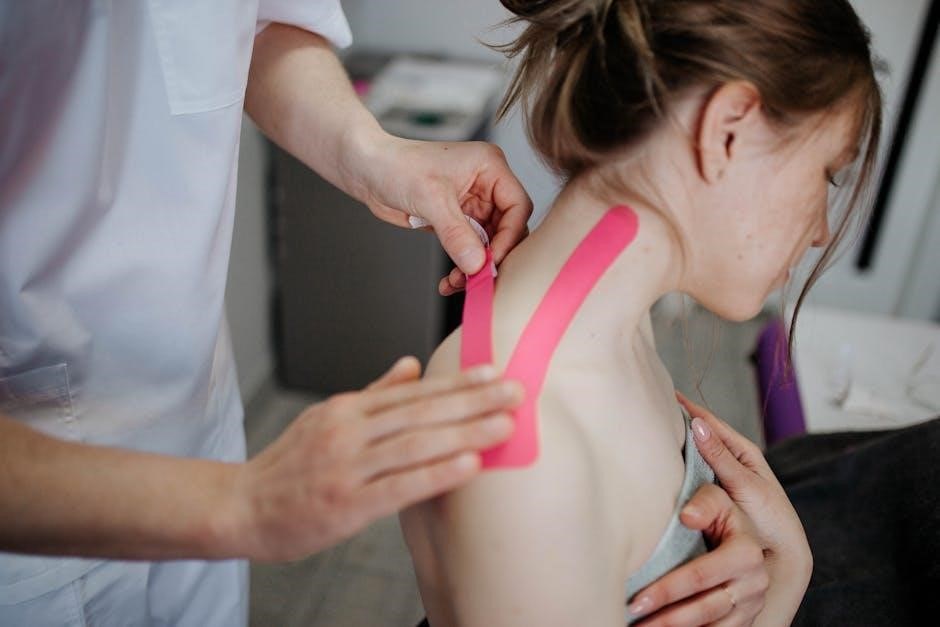
How to Find a Qualified Manual Therapist in Overland Park, KS
Research credentials, experience, and patient reviews to find a skilled manual therapist in Overland Park, KS, ensuring they specialize in spinal stenosis treatment.
Researching Credentials and Experience
When seeking a manual therapist in Overland Park, KS, prioritize researching their credentials and experience. Ensure they are licensed physical therapists with specialized training in manual therapy. Look for therapists with a proven track record in treating spinal stenosis, as their expertise will tailor treatments to your specific needs. Review patient testimonials and success stories to gauge their effectiveness and patient satisfaction. Additionally, verify if they use evidence-based techniques and stay updated on the latest advancements in spinal stenosis care. This ensures you receive high-quality, personalized treatment.
Reading Patient Reviews and Testimonials
Patient reviews and testimonials provide valuable insights into a therapist’s effectiveness. Look for consistent positive feedback about pain relief, improved mobility, and overall satisfaction with manual therapy for spinal stenosis. Pay attention to specific mentions of a therapist’s communication style, bedside manner, and ability to address individual needs. High ratings and heartfelt testimonials from patients in Overland Park, KS, can help you identify a skilled and compassionate manual therapist who specializes in spinal stenosis treatment. This step ensures you make an informed decision for your care.
Checking Insurance and Availability
Before selecting a manual therapist, verify their acceptance of your insurance plan to ensure coverage for spinal stenosis treatment. Check their office hours and availability to find a schedule that fits your needs. Many therapists in Overland Park, KS, offer flexible appointments, including early mornings or late evenings, to accommodate busy lifestyles. Confirming insurance and availability upfront helps streamline the process, ensuring you can focus on receiving timely and effective care for your spinal stenosis without financial or scheduling concerns.
What to Expect During a Manual Therapy Session
A session begins with a thorough consultation and assessment, followed by a physical examination to identify areas of dysfunction. The therapist then develops a personalized treatment plan, incorporating techniques like joint mobilization or myofascial release, to address spinal stenosis. You may also receive home exercises to enhance recovery and maintain progress.
Initial Consultation and Assessment
The initial consultation begins with a detailed review of your medical history, current symptoms, and lifestyle factors. Your therapist will ask about the onset of your condition, pain patterns, and how it impacts daily activities. This information helps identify potential causes and guides the assessment. A physical examination follows, evaluating posture, range of motion, strength, and mobility. The therapist may also perform specific tests to determine the extent of spinal stenosis and related dysfunction. This comprehensive approach ensures a personalized treatment plan tailored to your needs, fostering effective relief and recovery. Expect open communication throughout the process to ensure comfort and clarity;
Physical Examination and Diagnosis
A physical examination for spinal stenosis focuses on assessing posture, range of motion, and muscle strength. Your therapist will evaluate how movement affects your symptoms and perform tests to identify nerve compression or inflammation. Techniques like palpation and joint mobility assessments help pinpoint areas of dysfunction. In Overland Park, KS, manual therapists use these findings to diagnose the severity of spinal stenosis and develop targeted treatment plans. A thorough diagnosis ensures personalized care, addressing the root causes of pain and mobility issues effectively. This step is crucial for creating an accurate and effective treatment strategy.
Personalized Treatment Plan Development
A personalized treatment plan is created based on the findings from the physical examination and diagnosis. Your manual therapist in Overland Park, KS, will tailor techniques like joint mobilization, soft tissue work, and myofascial release to address your specific needs. The plan focuses on reducing pain, improving mobility, and enhancing spinal function. Goals are set collaboratively with the patient, ensuring a targeted approach to rehabilitation. Regular adjustments are made to optimize progress and achieve long-term relief from spinal stenosis symptoms, promoting overall well-being and functional improvement.

Home Exercises and Lifestyle Modifications
Home exercises and lifestyle changes play a crucial role in managing spinal stenosis. Gentle stretching, strengthening exercises, and proper posture can help alleviate symptoms and improve mobility, complementing manual therapy techniques.
Strengthening Exercises for Spinal Stenosis
Strengthening exercises are essential for managing spinal stenosis, as they help stabilize the spine and improve posture. Core strengthening exercises, such as planks and bird-dog poses, are particularly beneficial. Pelvic tilts and bridges can also strengthen the muscles surrounding the spine, reducing strain and discomfort. Gentle exercises like seated rows and lat pulldowns can enhance spinal stability. It’s important to start slowly and progress gradually to avoid exacerbating symptoms. Consulting with a physical therapist in Overland Park, KS, can provide personalized exercise plans tailored to your condition, ensuring safe and effective strengthening.
Stretching Routines to Improve Flexibility
Stretching is a key component of managing spinal stenosis, as it enhances flexibility and reduces stiffness. Gentle stretches for the hamstrings, hips, and lower back are particularly effective. Seated forward bends and cat-cow stretches can improve spinal mobility without putting excessive strain on the spine. Regular stretching routines can help alleviate tightness and improve range of motion, making daily activities more comfortable. A manual therapist in Overland Park, KS, can recommend specific stretches tailored to your condition, ensuring a safe and effective approach to maintaining flexibility and reducing discomfort.
Postural and Ergonomic Tips
Maintaining proper posture is crucial for managing spinal stenosis. Sitting and standing with a neutral spine can reduce strain on the spine. Ergonomic adjustments, such as using a supportive chair and positioning computers at eye level, can minimize discomfort. Avoiding prolonged sitting and taking regular breaks to stretch can also help. A manual therapist in Overland Park, KS, can provide personalized postural advice to enhance your home and work environments, supporting your spinal health and complementing manual therapy treatments for optimal relief and long-term well-being.
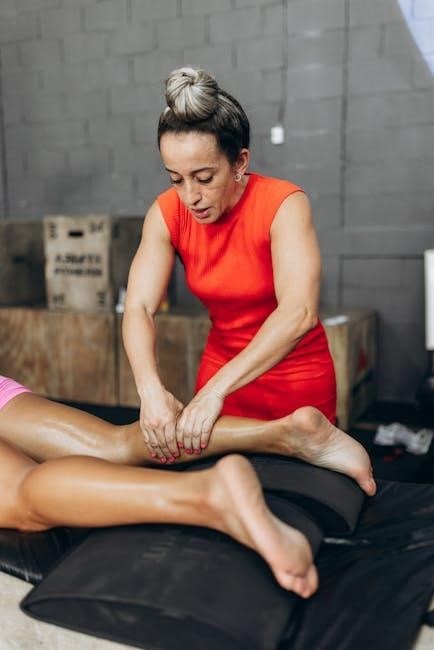
Conditions Related to Spinal Stenosis
Spinal stenosis often coexists with herniated discs, sciatica, facet syndrome, and arthritis, which can exacerbate symptoms and require comprehensive treatment approaches in Overland Park, KS.
Herniated Discs and Sciatica
Herniated discs often accompany spinal stenosis, compressing nerves and causing sciatica. Manual therapy in Overland Park, KS, can alleviate disc-related pain, improve nerve mobility, and reduce inflammation. Techniques like joint mobilization and soft tissue work help address nerve compression, while myofascial release eases muscle tension. By targeting the root causes of disc herniation, manual therapy enhances recovery, restores movement, and prevents further complications, offering a non-invasive solution for those suffering from sciatica and disc-related discomfort.
Facet Syndrome and Arthritis
Facet syndrome and arthritis often coexist with spinal stenosis, causing joint inflammation and pain. Manual therapy in Overland Park, KS, targets these conditions by improving joint mobility and reducing stiffness. Techniques like joint mobilization and soft tissue work help alleviate facet-related pain, while myofascial release eases muscle tension. By addressing inflammation and improving joint function, manual therapy enhances comfort and mobility for individuals with arthritis and facet syndrome, complementing other treatments for comprehensive care and long-term relief.
Neck Pain and Headaches
Neck pain and headaches often accompany spinal stenosis, particularly in the cervical region. Manual therapy in Overland Park, KS, addresses these issues by targeting tight muscles and restricted joints. Techniques like joint mobilization and myofascial release help reduce tension in the neck, alleviating pain and improving range of motion. By addressing postural imbalances and muscle dysfunction, manual therapy can also prevent recurring headaches. This holistic approach enhances spinal health, providing relief and restoring comfort for individuals suffering from neck pain and headaches related to spinal stenosis.
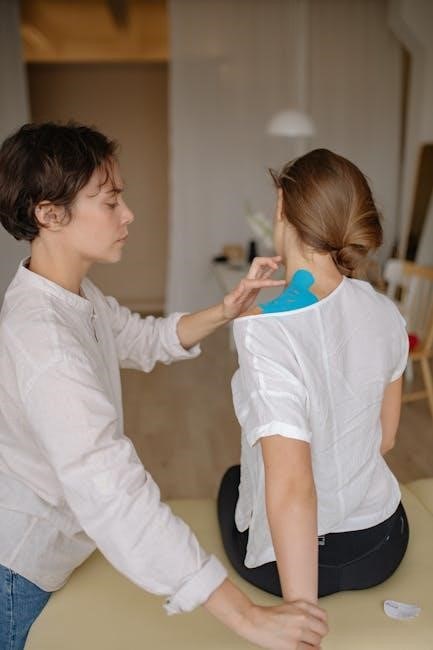
When to Seek Medical Attention
Seek immediate medical attention if experiencing severe pain, numbness, tingling, or bladder/bowel dysfunction due to spinal stenosis. Consult a spine specialist or doctor promptly for proper diagnosis and treatment.
Severe or Progressive Symptoms
Severe or progressive symptoms of spinal stenosis require immediate medical attention; These include intense pain, significant numbness, or tingling that worsens over time. If symptoms interfere with daily activities or indicate nerve damage, consult a healthcare provider promptly. Bladder or bowel dysfunction, such as loss of control, is a critical indicator requiring urgent care. Progressive weakness in the legs or arms may signal advanced nerve compression. Early intervention is crucial to prevent further complications and ensure effective treatment, potentially involving manual therapy or other therapies in Overland Park, KS.
Numbness, Tingling, or Weakness
Numbness, tingling, or weakness in the arms, legs, or lower back are common symptoms of spinal stenosis. These sensations may radiate along affected nerves, especially when standing or walking. Weakness can impair mobility, making daily activities challenging. If these symptoms persist or worsen, they may indicate nerve compression requiring medical evaluation. Manual therapy in Overland Park, KS, can address such symptoms by improving nerve function and reducing inflammation. Prompt consultation with a qualified therapist is essential to prevent progression and restore optimal nerve health and mobility.
Bladder or Bowel Dysfunction
Bladder or bowel dysfunction, such as incontinence or retention, may occur in severe spinal stenosis cases due to compressed nerves affecting the lower body. These symptoms are critical indicators requiring immediate medical attention. Manual therapy in Overland Park, KS, focuses on relieving nerve pressure, improving sensation, and restoring normal bodily functions. Early intervention by a qualified therapist can help prevent complications and enhance quality of life, ensuring proper management of these sensitive conditions through targeted, non-invasive techniques.

Combining Manual Therapy with Other Treatments
Combining manual therapy with physical therapy, chiropractic care, and medications offers a comprehensive approach to managing spinal stenosis, enhancing pain relief and supporting long-term recovery.
Physical Therapy and Exercise Programs
Physical therapy and exercise programs complement manual therapy by strengthening core muscles, improving flexibility, and enhancing spinal stability. A tailored exercise plan, designed by a physical therapist, focuses on low-impact activities like yoga or swimming to avoid stress on the spine. These programs often include stretching routines to improve range of motion and strengthening exercises to support the spine. Regular exercise helps maintain the benefits of manual therapy, promoting long-term pain relief and preventing future discomfort. A therapist in Overland Park, KS, can guide you through these exercises, ensuring they align with your specific needs and condition.
Chiropractic Care and Traction Therapy
Chiropractic care and traction therapy are effective complements to manual therapy for spinal stenosis. Chiropractic adjustments focus on improving spinal alignment and reducing nerve pressure, while traction therapy gently decompresses the spine to relieve compression. These methods, often used in Overland Park, KS, can enhance mobility and reduce discomfort. When combined with manual therapy, they provide a comprehensive approach to managing spinal stenosis, promoting long-term relief and improved spinal health. These therapies are tailored to individual needs, ensuring a holistic treatment plan.
Medications and Injections
Medications and injections are often used to manage pain and inflammation in spinal stenosis. Nonsteroidal anti-inflammatory drugs (NSAIDs) and muscle relaxants can help reduce discomfort, while corticosteroid injections may alleviate severe inflammation. These treatments are typically prescribed to complement manual therapy, providing temporary relief. However, they do not address the underlying structural issues. It’s important to consult a healthcare provider to determine the best course of medication or injections for your condition, ensuring they align with your overall treatment plan for spinal stenosis.
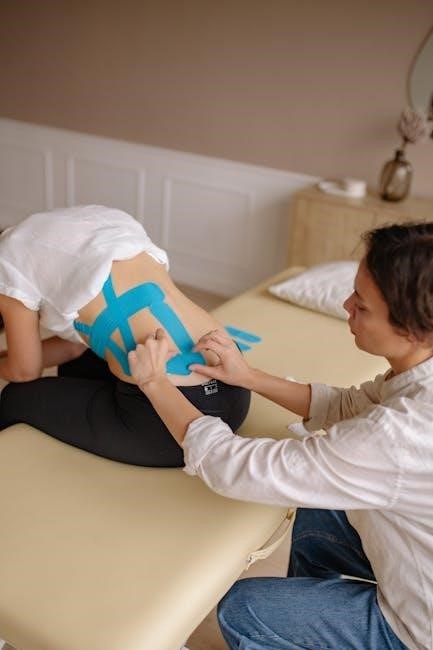
Top Manual Therapy Clinics in Overland Park, KS
- Calibration Physical Therapy
- SSOR (Specialists in Sports and Orthopedic Rehabilitation)
- TruMove Physical Therapy
- Performance Rehab KCOI
Calibration Physical Therapy
Calibration Physical Therapy in Overland Park, KS, specializes in manual therapy for spinal stenosis, offering transformative care to restore function and alleviate discomfort. Their experienced therapists provide personalized treatment plans tailored to address spinal stenosis symptoms, focusing on improving mobility and reducing pain. With expertise in joint mobilization, soft tissue techniques, and myofascial release, Calibration Physical Therapy is committed to delivering non-invasive, effective solutions for long-term spinal health and wellness.
SSOR (Specialists in Sports and Orthopedic Rehabilitation)
SSOR in Overland Park, KS, provides specialized manual therapy for spinal stenosis, combining orthopedic expertise with sports rehabilitation techniques. Their skilled therapists use advanced methods like joint mobilization and soft tissue therapy to enhance mobility and reduce discomfort. SSOR’s comprehensive approach ensures personalized care, focusing on improving function and promoting long-term spinal health. Their commitment to evidence-based treatments makes them a trusted choice for effective management of spinal stenosis and related conditions.
TruMove Physical Therapy
TruMove Physical Therapy in Overland Park, KS, is a top-rated clinic offering specialized manual therapy for spinal stenosis. With a focus on soft tissue mobilization and deep muscle recovery, their experienced therapists provide personalized care to enhance mobility and reduce discomfort. TruMove’s comprehensive approach combines advanced techniques with a patient-centered philosophy, ensuring tailored treatment plans for optimal results. Their commitment to improving function and promoting long-term spinal health makes them a trusted choice for those seeking effective relief from spinal stenosis symptoms.
Performance Rehab KCOI
Performance Rehab KCOI in Overland Park, KS, offers expert manual therapy for spinal stenosis, focusing on restoring function and alleviating discomfort. Their skilled therapists use advanced techniques like joint mobilization and soft tissue therapy to address spinal issues. By combining manual therapy with personalized exercise programs, they help patients achieve improved mobility and strength. With a patient-centric approach, Performance Rehab KCOI ensures tailored care, making them a leading choice for those seeking effective treatment for spinal stenosis in the region.
Manual therapy offers a non-invasive, effective solution for spinal stenosis, improving mobility and reducing pain. Consulting a qualified therapist in Overland Park, KS, ensures personalized care and optimal results.
The Importance of Manual Therapy for Spinal Stenosis
Manual therapy is crucial for managing spinal stenosis, addressing root causes like joint dysfunction and muscle tension. It improves mobility, reduces pain, and enhances spinal health without surgery. By targeting specific areas, manual therapy restores proper joint mechanics and relieves nerve compression. This approach complements other treatments, offering a holistic solution. Regular sessions can prevent future issues, promoting long-term well-being. Consulting a qualified therapist in Overland Park, KS, ensures personalized care tailored to your needs, making manual therapy a vital component in managing spinal stenosis effectively.
Long-Term Benefits and Prevention
Manual therapy offers lasting relief from spinal stenosis by improving joint flexibility and muscle strength. Regular sessions prevent future flare-ups, promoting a healthier spine. Over time, it enhances posture and reduces strain, lowering the risk of additional issues. Combining manual therapy with home exercises and ergonomic adjustments further supports long-term spinal health. In Overland Park, KS, therapists tailor treatment plans to maintain progress, ensuring sustained well-being and minimizing the need for invasive interventions.
